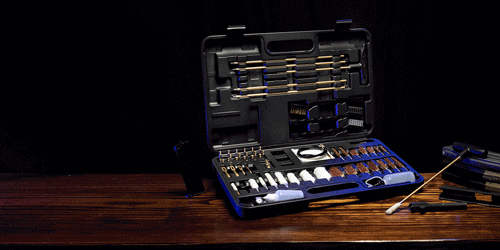How to Choose the Right Hunting Knife
A hunting knife is one of the most essential tools for any hunter. Whether you’re dressing a deer, skinning a rabbit, or performing general outdoor tasks, having the right knife can make all the difference in your success and efficiency. But with so many options available, how do you choose the perfect hunting knife for your needs?
Here’s a comprehensive guide on how to select the right hunting knife based on blade types, handle materials, and other important considerations.
Determine the Purpose of the Knife
The first step in choosing the right hunting knife is to think about what tasks you’ll need it for. Different knives serve different purposes, so selecting the right one depends on the specific activities you plan to undertake in the field.
- Field Dressing and Skinning: If you primarily need a knife for field dressing game or skinning, look for a blade with a narrow, sharp point. A skinning knife or a drop-point blade is often ideal for these tasks.
- Butchering: For more heavy-duty tasks like butchering or processing meat, you may need a larger, sturdier blade such as a fixed-blade knife with a strong spine.
- General Utility: If you need a more versatile knife for cutting rope, preparing firewood, or other general survival tasks, consider a larger, all-purpose hunting knife or a multi-tool that includes a knife.

Choose the Blade Type
The blade type significantly influences how the knife will perform, so it’s essential to understand the different shapes and features of knife blades:
- Drop-Point Blade: A drop-point blade is one of the most common designs for hunting knives. It has a convex curve that provides a strong and controllable tip, ideal for skinning and dressing game. The curved edge makes it easier to cut through meat and skin without puncturing internal organs.
- Clip-Point Blade: This blade has a more aggressive tip that allows for precision cutting. It’s great for detailed work such as gutting, but it may be less durable than a drop-point blade for heavier tasks.
- Skinning Blade: Specifically designed for skinning game, these knives typically have a curved blade that helps separate the hide from the meat without damaging the skin. Skinning knives are perfect for hunters who focus on fur-bearing animals or larger game.
- Tanto Blade: Known for its strong tip, the tanto blade is ideal for tasks that require piercing or prying. It’s not the best choice for skinning or dressing game but can be useful for heavy-duty fieldwork.
- Sheepsfoot Blade: This blade has a straight edge with a rounded tip, making it great for tasks like cutting rope or other utility tasks where a blunt tip is desirable for safety.

Consider Blade Material
The material of the blade plays a huge role in its durability, sharpness, and resistance to corrosion. When choosing a hunting knife, consider these materials:
- Carbon Steel: Carbon steel blades are known for their ability to hold a sharp edge longer than stainless steel. However, they require more maintenance as they are prone to rust and corrosion if not properly cared for.
- Stainless Steel: Stainless steel is more resistant to corrosion and rust, making it a good choice for wet or humid environments. While it may not hold an edge as long as carbon steel, it is generally easier to maintain.
- High Carbon Stainless Steel: Some knives are made with a blend of both carbon and stainless steel. These offer a good balance of sharpness retention and corrosion resistance, making them an ideal choice for hunters who want a low-maintenance, durable blade.
- Damascus Steel: This is a premium material often used in high-end knives. Known for its beautiful patterning, Damascus steel blades are both tough and sharp. However, they are typically more expensive.

Blade Length
The length of the blade is another important factor to consider when choosing a hunting knife. The optimal blade length depends on the size of the game you're hunting and the type of tasks you'll be performing.
- Short Blade (3 to 4 inches): A shorter blade is perfect for delicate tasks like skinning and field dressing small to medium-sized animals. It offers better control and maneuverability in tight spaces.
- Medium Blade (4 to 5 inches): This size is the most versatile and is good for a wide range of tasks, from skinning and gutting to general utility work. It provides a balance between control and cutting power.
- Long Blade (5 to 7 inches): Larger knives are suitable for tougher tasks like butchering large game or chopping through thick vegetation. While they offer more power, they can be harder to control for precise tasks.
Fixed Blade vs. Folding Knife
Another critical decision is whether to choose a fixed-blade or folding knife:
- Fixed Blade Knife: Fixed-blade knives are generally stronger, more reliable, and easier to clean. They are the best option for hunters who plan on using their knife for heavy-duty tasks like dressing large game or processing meat. The blade is always accessible and ready for use.
- Folding Knife: Folding knives are more compact and portable, making them an excellent choice for hunters who prefer a lightweight, pocket-sized tool. While folding knives are more convenient for carrying, they may not be as durable or strong as fixed-blade knives.

Handle Material and Design
A comfortable handle is crucial for a hunting knife, especially when using it for extended periods. The right handle material will ensure a secure grip and prevent slipping, especially in wet or cold conditions. Common handle materials include:
- Wood: Classic and aesthetically pleasing, wood handles provide a solid grip. However, they can be slippery when wet and may require more maintenance to prevent cracking or damage.
- Rubber: Rubberized handles are durable, provide a firm grip, and are often used in knives designed for wet conditions. They offer good traction, even when the knife is wet or bloody.
- Synthetic Composites: Materials like G-10 or Micarta offer excellent durability and grip. They are resistant to moisture and extreme weather conditions, making them great for all types of hunting.
- Metal: Metal handles are extremely durable, but they can be slippery if not textured. They are often used in knives designed for heavy-duty tasks.
Additionally, consider the ergonomics of the handle. It should feel comfortable in your hand, with enough space for a secure grip. Look for knives with textured or contoured handles that provide better control and reduce hand fatigue.

Full Tang vs. Partial Tang
The tang of the knife refers to how the blade and handle are connected. A full tang means the blade extends all the way through the handle, offering superior strength and durability. A partial tang, on the other hand, may not offer as much strength but is often lighter and more affordable. For hunting knives, a full tang is usually recommended for maximum strength and reliability.
Price and Brand
While price is not always an indicator of quality, it’s essential to find a knife that fits within your budget without compromising on durability and performance. Many reputable brands offer high-quality knives at various price points, such as Benchmade, Spyderco, Buck, and Gerber. Investing in a well-known, trusted brand can often ensure you get a knife that will last for years.
Conclusion
Choosing the right hunting knife depends on several factors, from the type of game you hunt to the tasks you plan to perform. Whether you need a precise skinning blade, a sturdy butchering knife, or a versatile all-purpose tool, consider your needs carefully before making a decision. A high-quality hunting knife can be an invaluable asset on your hunting trips, and when chosen correctly, it will serve you reliably for many years to come.





